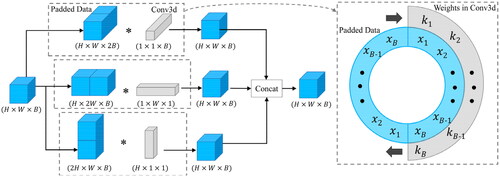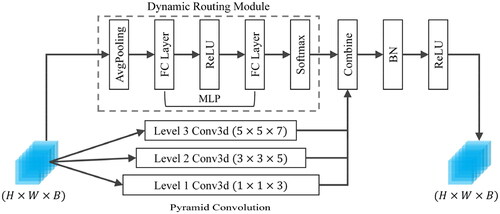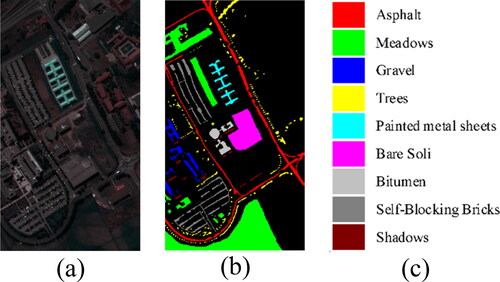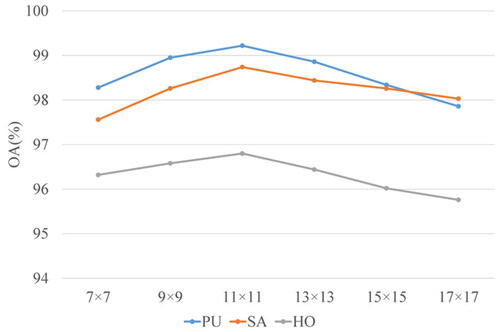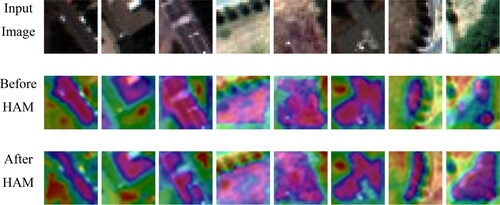Figures & data
Figure 10. Visual comparison on the PU dataset: (a) Ground-truth, (b) SVM, (c) CDCNN, (d) SSRN, (e) DBDA, (f) DCRN, (g) SSFTT, (h) GPHANet.

Table 1. Classification results of seven methods on the PU dataset.
Figure 11. Visual comparison on the SA dataset: (a) Ground-truth, (b) SVM, (c) CDCNN, (d) SSRN, (e) DBDA, (f) DCRNet, (g) SSFTT, (h) GPHANet.

Figure 12. Visual comparison on the HO dataset: (a) Ground-truth, (b) SVM, (c) CDCNN, (d) SSRN, (e) DBDA, (f) DCRN, (g) SSFTT, (h) GPHANet.
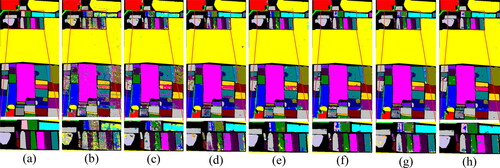
Table 2. Classification results of seven methods on the SA dataset.
Table 3. Classification results of seven methods on the HO dataset.
Table 4. The testing time (s) between different methods on three datasets.


